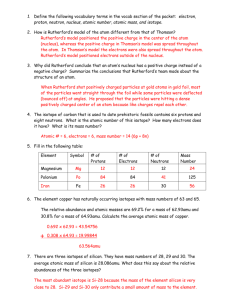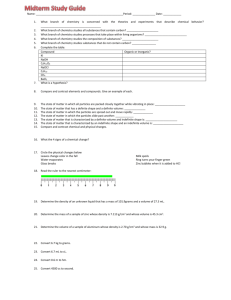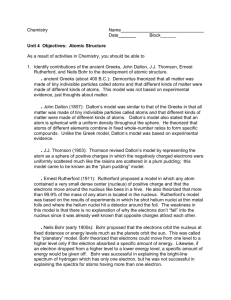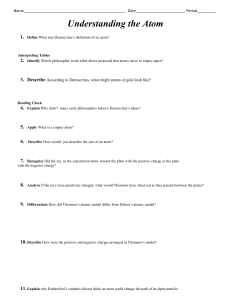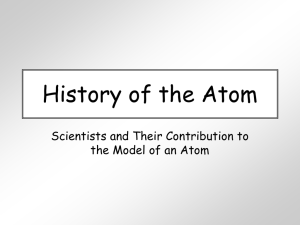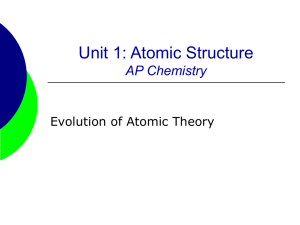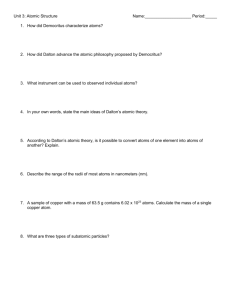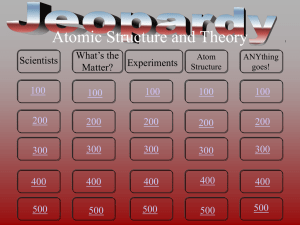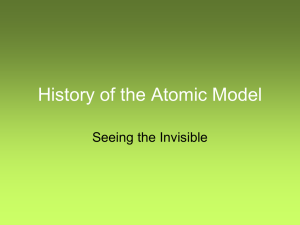Development of Atomic Theory: Rutherford to Modern Theory
advertisement
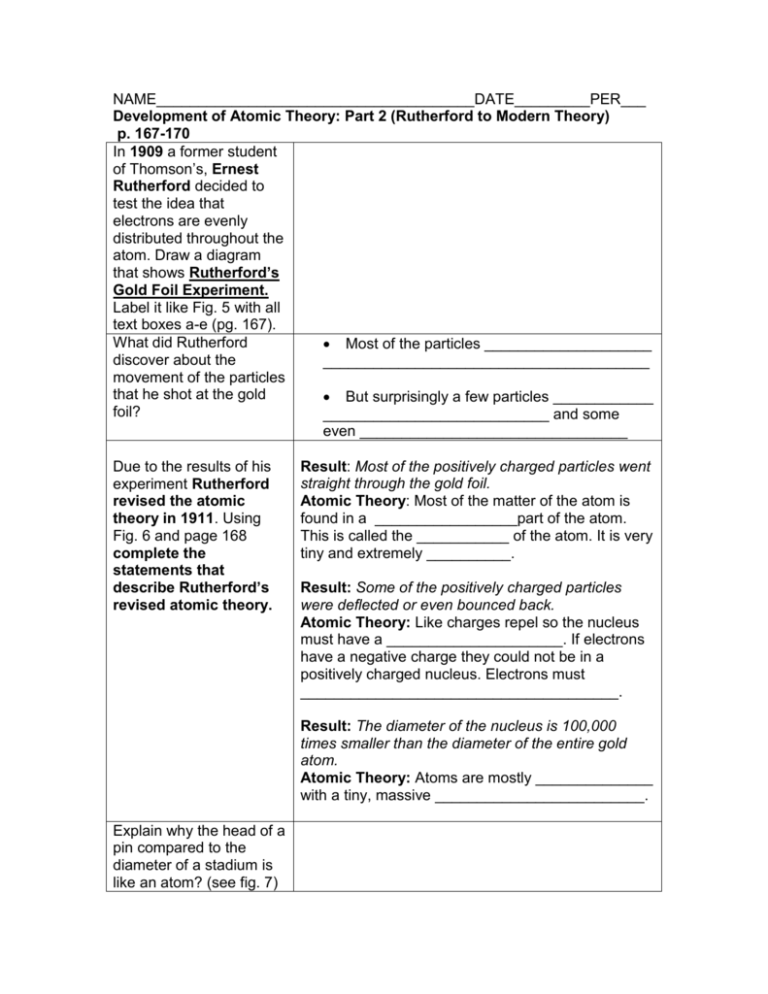
NAME______________________________________DATE_________PER___ Development of Atomic Theory: Part 2 (Rutherford to Modern Theory) p. 167-170 In 1909 a former student of Thomson’s, Ernest Rutherford decided to test the idea that electrons are evenly distributed throughout the atom. Draw a diagram that shows Rutherford’s Gold Foil Experiment. Label it like Fig. 5 with all text boxes a-e (pg. 167). What did Rutherford Most of the particles ____________________ discover about the _______________________________________ movement of the particles that he shot at the gold But surprisingly a few particles ____________ foil? ___________________________ and some even ________________________________ Due to the results of his experiment Rutherford revised the atomic theory in 1911. Using Fig. 6 and page 168 complete the statements that describe Rutherford’s revised atomic theory. Result: Most of the positively charged particles went straight through the gold foil. Atomic Theory: Most of the matter of the atom is found in a _________________part of the atom. This is called the ___________ of the atom. It is very tiny and extremely __________. Result: Some of the positively charged particles were deflected or even bounced back. Atomic Theory: Like charges repel so the nucleus must have a _____________________. If electrons have a negative charge they could not be in a positively charged nucleus. Electrons must ______________________________________. Result: The diameter of the nucleus is 100,000 times smaller than the diameter of the entire gold atom. Atomic Theory: Atoms are mostly ______________ with a tiny, massive _________________________. Explain why the head of a pin compared to the diameter of a stadium is like an atom? (see fig. 7) In 1913, Niels Bohr studied the way that atoms react to light. What did he learn about electron movement? Can they change paths? The Modern Theory of the atom states that electrons do not travel in specific paths or orbits. Describe the region where electrons travel. Can we predict where an electron may be found? Electron clouds exist at a certain Energy Level. Therefore the energy that an electron has is based on what? Explain how the bookshelves in Fig. 9 can help you understand the movement of electrons in an atom. Atoms are very small. How many atoms could fit inside a penny? We still are not able to see an actual picture of an atom but what can a scanning tunneling electron microscope show us? Summary: On a separate page discuss some of the changes that have occurred in atomic theory since Dalton’s idea of an atom up to the Modern Theory of the Atom.

